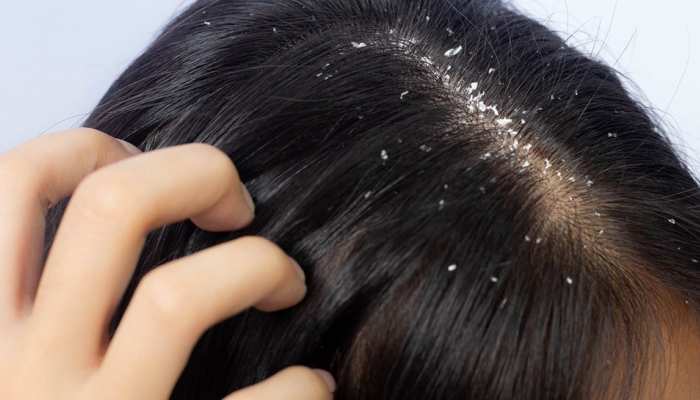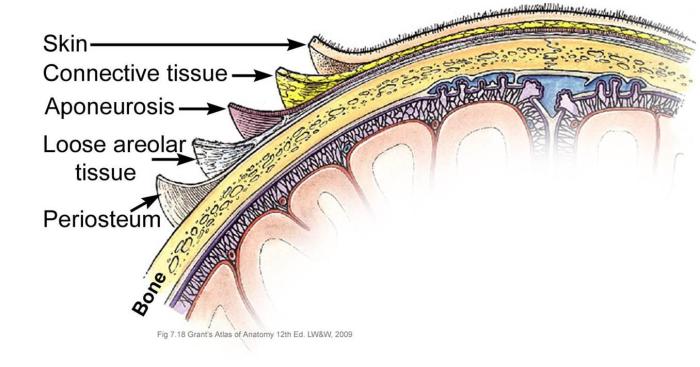Scalp psoriasis vs dandruff: Understanding these seemingly similar scalp conditions is crucial for effective treatment. This guide dives deep into the differences, symptoms, causes, diagnosis, and treatment options for both, allowing you to better manage your scalp health.
From the initial symptoms to potential complications, we’ll explore everything you need to know to differentiate between psoriasis and dandruff, ensuring you get the right diagnosis and treatment.
Introduction to Scalp Psoriasis and Dandruff
Scalp conditions like psoriasis and dandruff can significantly impact a person’s self-esteem and quality of life. Understanding the differences between these two common conditions is crucial for proper diagnosis and effective management. This section provides a clear overview of both scalp psoriasis and dandruff, highlighting their distinct characteristics and symptoms.Scalp psoriasis and dandruff, while both affecting the scalp, are fundamentally different in their underlying causes and clinical presentations.
Recognizing these distinctions is key to receiving appropriate medical advice and treatment.
Definition of Scalp Psoriasis
Scalp psoriasis is a chronic autoimmune skin condition characterized by red, inflamed patches of skin covered with silvery scales. The immune system mistakenly attacks healthy skin cells, leading to rapid skin cell production and the formation of these characteristic lesions. This rapid cell turnover is a key factor differentiating psoriasis from other scalp conditions.
Definition of Dandruff
Dandruff is a common scalp condition characterized by the excessive shedding of dead skin cells. This shedding is typically more noticeable than the normal process, resulting in flakes of white or yellowish skin. Dandruff is often triggered by factors like dryness, yeast overgrowth, or a weakened scalp barrier.
Key Differences between Scalp Psoriasis and Dandruff
The primary difference between scalp psoriasis and dandruff lies in their underlying causes and the resulting symptoms. Psoriasis is an autoimmune disorder, while dandruff is typically a reaction to environmental or scalp factors. The appearance and texture of the lesions also differ significantly. Understanding these differences is crucial for proper diagnosis and treatment.
Common Symptoms of Scalp Psoriasis
Scalp psoriasis presents with a variety of symptoms. Commonly, affected areas display red, inflamed skin patches. These patches are often covered with silvery-white scales that can be thick and easily visible. Itching is a frequent symptom, ranging from mild to intense. Dryness and cracking of the skin can also accompany the condition.
Common Symptoms of Dandruff
Dandruff is characterized by the excessive shedding of dead skin cells. The resulting flakes are typically white or yellowish and may be noticeable on the shoulders or clothing. Mild to moderate itching is common, but it is usually not as severe as in psoriasis. The scalp itself may feel dry or slightly irritated.
Figuring out if your itchy scalp is psoriasis or just dandruff can be tricky. While both can cause discomfort, psoriasis often presents with more noticeable, flaky patches. Interestingly, understanding the complexities of conditions like metastatic castration resistant prostate cancer metastatic castration resistant prostate cancer can highlight the importance of recognizing the subtle differences between various skin issues.
Ultimately, if you’re unsure, consulting a dermatologist is always the best course of action for accurate diagnosis and personalized treatment for scalp psoriasis vs dandruff.
Comparison Table of Symptoms
| Feature | Scalp Psoriasis | Dandruff |
|---|---|---|
| Appearance of Lesions | Red, inflamed patches covered with silvery-white scales; plaques; sometimes thick | White or yellowish flakes; often in small amounts; less visually noticeable as plaques |
| Itching | Moderate to severe, often persistent itching | Mild to moderate itching, intermittent |
| Scalp Texture | Dry, sometimes cracked skin | May feel dry, but not as severe as psoriasis |
| Inflammation | Significant inflammation, redness | Mild or no inflammation |
| Underlying Cause | Autoimmune disorder | Environmental factors, yeast overgrowth, or weakened scalp barrier |
Causes and Risk Factors
Understanding the causes and risk factors for scalp psoriasis and dandruff is crucial for effective management and prevention. These conditions, while often similar in presentation, have distinct underlying mechanisms. Pinpointing the triggers can significantly impact treatment strategies and lifestyle choices.The precise causes of both conditions remain somewhat elusive, but a combination of genetic predisposition and environmental factors play significant roles.
Research suggests that immune system dysregulation plays a key part in the development of psoriasis, while environmental factors, like stress and infections, are more closely associated with dandruff.
Causes of Scalp Psoriasis
Scalp psoriasis arises from an overactive immune response in the skin cells. This response leads to rapid cell growth, resulting in the characteristic red, scaly patches. While the exact trigger remains unknown, several factors are thought to contribute to this immune system malfunction.
- Genetics: A family history of psoriasis significantly increases the risk of developing the condition. Inherited genes influence the immune system’s response, making individuals more susceptible to this inflammatory skin disorder.
- Environmental Factors: Certain environmental factors, such as infections (e.g., strep throat), stress, and injuries (e.g., cuts or scrapes), can trigger or worsen psoriasis in susceptible individuals. These factors may act as a catalyst, activating the underlying genetic predisposition.
- Medications: Certain medications, including lithium and some antimalarials, have been linked to the onset or exacerbation of psoriasis in some patients. The precise mechanism is not fully understood, but it is believed that these medications can influence the immune system’s response in a way that promotes inflammation.
Causes of Dandruff
Dandruff, characterized by flaky skin on the scalp, is a common condition primarily caused by an overgrowth of a fungus called Malassezia globosa. This fungus is naturally present on the scalp, but under certain conditions, it can multiply excessively, leading to inflammation and shedding of skin cells.
- Malassezia Overgrowth: The primary culprit behind dandruff is an overgrowth of the fungus
-Malassezia globosa*, which normally resides on the scalp. Factors influencing this overgrowth can include hormonal changes, stress, and skin conditions. - Sebum Production: The amount of sebum, the oily substance produced by the scalp, can influence the growth of
-Malassezia globosa*. Increased sebum production can create an environment conducive to fungal growth. - Hygiene Practices: While not a direct cause, certain hygiene practices can exacerbate dandruff. Washing the scalp too infrequently may allow the fungus to flourish, while using harsh shampoos or excessively drying the scalp can also contribute to irritation and scaling.
Risk Factors for Scalp Psoriasis and Dandruff
The following table summarizes the potential risk factors for both scalp psoriasis and dandruff. It highlights the similarities and differences in their underlying causes.
| Risk Factor | Scalp Psoriasis | Dandruff |
|---|---|---|
| Genetics | High | Moderate |
| Stress | Moderate | High |
| Certain Infections | Moderate | Low |
| Medications | Moderate | Low |
| Hormonal Changes | Low | Moderate |
| Sebum Production | Low | High |
Diagnosis and Treatment

Understanding the differences in diagnosis and treatment between scalp psoriasis and dandruff is crucial for effective management. Both conditions can cause similar symptoms, leading to confusion. Accurate diagnosis is the first step in developing a personalized treatment plan.Precise identification of the underlying cause allows for tailored therapies and minimizes the risk of misdiagnosis and ineffective treatments. This section delves into the diagnostic processes and treatment options for both scalp psoriasis and dandruff, highlighting the key differences and providing practical guidance.
Diagnostic Procedures for Scalp Psoriasis
Diagnosing scalp psoriasis typically involves a thorough physical examination of the scalp. A dermatologist will visually inspect the affected area, looking for characteristic signs like red, inflamed patches, silvery scales, and plaques. The location and appearance of the lesions can be helpful clues. Sometimes, a skin biopsy may be necessary to confirm the diagnosis, especially if the condition is unclear or atypical.
The biopsy helps in ruling out other skin conditions with similar symptoms.
Diagnostic Procedures for Dandruff
Diagnosing dandruff involves a physical examination of the scalp, looking for symptoms like flaking, itching, and redness. A dermatologist will assess the severity and pattern of the scaling, which can vary significantly. A visual assessment is usually sufficient for diagnosis. In rare cases, further testing might be required to rule out other conditions, particularly if the symptoms are unusually severe or persistent.
Treatment Options for Scalp Psoriasis
Scalp psoriasis treatment aims to reduce inflammation, control scaling, and alleviate symptoms. Topical medications are often the first line of defense. These can include corticosteroids, vitamin D analogs, anthralin, and coal tar. Systemic medications, like methotrexate or cyclosporine, may be necessary in severe cases or when topical treatments are insufficient. Phototherapy, such as UVB light therapy, is another effective treatment option.
This approach targets the inflamed areas with controlled doses of ultraviolet light.
Figuring out if your flaky scalp is dandruff or psoriasis can be tricky. While both cause those pesky white flakes, the underlying causes differ significantly. Just like managing blood sugar levels, finding the right approach to scalp health often involves exploring different treatment options. For those dealing with diabetes, understanding sugar replacements for diabetics can be crucial for overall well-being.
Ultimately, proper diagnosis and tailored treatment plans are key to effectively addressing scalp psoriasis or dandruff.
Treatment Options for Dandruff
Dandruff treatment focuses on managing the flaking and itching. Topical antifungals, such as selenium sulfide or ketoconazole shampoos, are frequently prescribed. These shampoos help to control the yeast that can contribute to dandruff. Other options include anti-inflammatory shampoos containing salicylic acid or pyrithione zinc. These help to exfoliate the scalp and reduce inflammation.
Lifestyle factors, such as stress management and proper hydration, can also play a role in managing dandruff.
Common Treatment Approaches for Both Conditions
| Treatment Approach | Scalp Psoriasis | Dandruff |
|---|---|---|
| Topical Medications | Corticosteroids, vitamin D analogs, anthralin, coal tar | Antifungals (selenium sulfide, ketoconazole), anti-inflammatory agents (salicylic acid, pyrithione zinc) |
| Systemic Medications | Methotrexate, cyclosporine (severe cases) | Generally not necessary unless severe |
| Phototherapy | UVB light therapy | Not typically used |
Managing Scalp Psoriasis Symptoms
Effective symptom management for scalp psoriasis involves a combination of consistent treatment and lifestyle adjustments. Maintaining a regular treatment schedule, as prescribed by a dermatologist, is crucial. Avoiding triggers, such as stress and certain products, can help reduce flare-ups. Using gentle, fragrance-free products on the scalp is also recommended. Moisturizing the scalp regularly can help manage dryness and scaling.
Managing Dandruff Symptoms
Managing dandruff involves consistent use of prescribed shampoos and avoiding triggers. Regular scalp hygiene is essential. Choosing appropriate shampoos and avoiding harsh or irritating products can help reduce the frequency and severity of flaking. Stress management techniques, such as meditation or yoga, might also help in mitigating dandruff symptoms. A balanced diet and adequate hydration can also contribute to overall scalp health.
Figuring out if you have scalp psoriasis or just dandruff can be tricky. Often, a good posture assessment can be helpful in understanding the underlying causes of scalp irritation. Improving posture, by practicing exercises and mindful body alignment, can actually reduce stress and inflammation throughout your body, potentially easing the symptoms of scalp psoriasis. While dandruff is usually a less severe condition, knowing the difference between the two can help you choose the best treatment approach.
For more detailed information on how to improve posture, check out this helpful guide: how to improve posture. Ultimately, a correct diagnosis is key to finding the right solution for your specific scalp issue.
Visual Representation: Scalp Psoriasis Vs Dandruff
Recognizing the differences between scalp psoriasis and dandruff is crucial for accurate diagnosis and appropriate treatment. Visual cues, though not definitive, can be helpful in distinguishing between the two conditions. Careful observation of the affected area, including color, texture, and size of lesions, can provide valuable information to a healthcare professional.
Scalp Psoriasis Lesions
Scalp psoriasis lesions typically present as red, inflamed patches on the scalp. These patches can vary in size, from small, pinpoint areas to larger, plaque-like formations. The skin within these patches often appears thickened and rough, with a silvery-white buildup of scales. This scaling can be easily scraped off, revealing a moist, red surface beneath. The texture of the affected skin can feel like sandpaper or rough, dry leather.
The color of the plaques can range from a pale, pinkish-red to a more vibrant, reddish hue, depending on the individual and the severity of the condition.
Dandruff Flakes
Dandruff is characterized by the presence of small, white or yellowish flakes that appear on the scalp. These flakes are typically dry and powdery, often appearing as fine particles that easily fall from the scalp. The texture is typically dry and easily detachable from the scalp, unlike the more adherent scales of psoriasis. The flakes are usually small and numerous, and may be associated with itching and/or a feeling of dryness.
Comparison Table
| Feature | Scalp Psoriasis | Dandruff |
|---|---|---|
| Color | Red, pinkish-red, or reddish, often with silvery-white scales | White or yellowish, appearing as fine flakes |
| Texture | Thickened, rough, like sandpaper, often with adherent silvery-white scales | Dry, powdery, easily detachable flakes |
| Size | Variable, from small pinpoint areas to large, plaque-like formations | Small, numerous flakes |
| Distribution | Often appears in distinct patches or plaques, sometimes spreading over large areas | Typically distributed diffusely over the scalp, often appearing more noticeable at the hairline or around the ears |
| Scaling | Silvery-white scales that can be easily scraped off, revealing a moist, red surface beneath | Dry, powdery flakes that easily fall from the scalp |
Prevention and Management Strategies

Taking proactive steps to manage scalp psoriasis and dandruff can significantly improve your quality of life. Understanding the triggers and employing effective strategies for both conditions can lead to noticeable improvements in scalp health and overall well-being. Consistent effort in prevention and management plays a crucial role in achieving long-term control and minimizing flare-ups.Effective management of scalp conditions requires a multi-faceted approach encompassing lifestyle adjustments, topical treatments, and consistent scalp care.
This section delves into preventative measures, highlighting crucial lifestyle changes that can significantly impact the progression of both psoriasis and dandruff. The importance of regular scalp care and a tailored approach to managing these conditions is emphasized.
Preventative Measures for Scalp Psoriasis
Scalp psoriasis often responds well to preventative measures aimed at minimizing triggers and promoting overall scalp health. Avoiding known triggers can be crucial in preventing flare-ups.
- Identify and Avoid Triggers: Certain factors can exacerbate psoriasis. These may include stress, certain medications, infections, and changes in weather. Recognizing and avoiding these triggers is essential for preventing flare-ups. For instance, if a particular food seems to worsen your psoriasis, limiting or eliminating it from your diet could be a helpful step. Similarly, stress management techniques, such as meditation or yoga, may help reduce the impact of stress-related psoriasis outbreaks.
- Maintain a Healthy Diet: A balanced diet rich in fruits, vegetables, and whole grains can support overall health, which may indirectly contribute to better scalp health. Limiting processed foods, sugary drinks, and excessive alcohol consumption may also be beneficial. A nutritious diet can be particularly helpful in conjunction with other preventative measures.
- Stress Management Techniques: Chronic stress can trigger or worsen psoriasis. Implementing stress-reducing strategies, such as exercise, meditation, or spending time in nature, can help manage stress and potentially reduce psoriasis flare-ups. Consistent practice of stress-reducing activities can be valuable in preventing outbreaks.
Preventative Measures for Dandruff
Dandruff, often caused by a combination of factors, can be managed effectively through proactive measures.
- Regular Scalp Cleansing: Washing your hair with a gentle, dandruff-specific shampoo regularly is crucial. This helps remove excess oil and flakes. Consistency is key in managing dandruff; it is important to follow a regular shampooing routine, tailored to your specific needs.
- Avoid Over-Washing: While regular cleansing is important, over-washing can disrupt the scalp’s natural oils, leading to dryness and potentially worsening dandruff. Finding a balance between sufficient cleansing and avoiding over-washing is important.
- Use a Mild Shampoo: Harsh shampoos can irritate the scalp and worsen dandruff. Opting for a gentle, medicated shampoo, if needed, can be beneficial. Using a mild shampoo is a good preventative step against potential irritation.
Lifestyle Changes for Managing Scalp Psoriasis, Scalp psoriasis vs dandruff
Implementing lifestyle changes can complement topical treatments and significantly improve the management of scalp psoriasis.
- Stress Management: Chronic stress can exacerbate psoriasis. Techniques like yoga, meditation, or spending time in nature can help manage stress levels and potentially reduce flare-ups. Incorporating these stress-relieving activities into a routine can contribute to overall well-being and help manage psoriasis.
- Adequate Sleep: Getting enough sleep is essential for overall health. A lack of sleep can weaken the immune system, potentially impacting psoriasis management. Prioritizing adequate sleep is crucial for both physical and mental well-being.
- Balanced Diet: A diet rich in fruits, vegetables, and whole grains can support overall health, which may indirectly benefit psoriasis management. This can include limiting processed foods, sugary drinks, and excessive alcohol consumption.
Lifestyle Changes for Managing Dandruff
Implementing lifestyle changes can complement topical treatments and significantly improve the management of dandruff.
- Balanced Diet: A healthy diet may indirectly influence scalp health. A diet rich in fruits, vegetables, and whole grains may contribute to overall well-being, which could benefit dandruff management. This includes limiting processed foods and sugary drinks.
- Hydration: Drinking plenty of water can support overall health and potentially contribute to a healthier scalp. Proper hydration can be a significant part of overall well-being.
- Regular Exercise: Exercise can improve circulation and overall health, which might have a positive impact on dandruff management. Maintaining a healthy lifestyle through exercise is a positive step towards managing dandruff.
Tips for Maintaining Scalp Health
Maintaining healthy scalp habits is essential for both preventing and managing scalp conditions.
- Gentle Scalp Scrubs (as needed): A gentle scrub can help remove dead skin cells and promote blood circulation. This is a useful step in maintaining a healthy scalp, but should be used sparingly to avoid irritation.
- Use a Scalp Massager: A gentle scalp massage can promote blood circulation and reduce stress. This can be an effective way to help maintain scalp health and potentially manage related conditions.
- Regular Hair Washing: Regular washing removes excess oil and dirt, which can contribute to dandruff and other scalp issues. A consistent hair-washing routine is beneficial for maintaining a healthy scalp.
Importance of Regular Scalp Care
Consistent scalp care is essential for preventing and managing both scalp psoriasis and dandruff. A tailored approach, incorporating proper cleansing, moisturizing, and addressing underlying triggers, can significantly improve scalp health and overall well-being.
Complications and Associated Conditions
Untreated scalp conditions like psoriasis and dandruff can lead to a range of complications, impacting both physical and mental well-being. Understanding these potential issues is crucial for proactive management and seeking appropriate medical attention. While both conditions can cause significant discomfort, the specific complications and associated risks differ.A thorough understanding of these complications allows individuals to make informed decisions about their health and seek timely medical intervention when necessary.
This section will delve into the potential consequences of untreated scalp psoriasis and dandruff, and discuss associated conditions that may co-occur with these skin disorders.
Potential Complications of Untreated Scalp Psoriasis
Untreated scalp psoriasis can lead to a number of complications, some of which can be quite severe. These complications stem from the chronic inflammation and skin damage characteristic of the condition. Prolonged, untreated psoriasis can result in thickened, inflamed, and painful lesions, potentially leading to significant discomfort and impacting daily activities.
- Secondary Infections: Cracked, bleeding skin lesions from psoriasis are susceptible to bacterial or fungal infections. These infections can worsen the inflammation and cause further discomfort. Treatment may require antibiotics or antifungals, alongside ongoing psoriasis management.
- Joint Pain and Psoriatic Arthritis: A significant percentage of individuals with psoriasis develop psoriatic arthritis, a chronic inflammatory condition affecting the joints. Symptoms range from mild stiffness to severe pain and swelling, impacting mobility and quality of life. Early diagnosis and treatment are essential to mitigate the long-term effects of this condition.
- Emotional Distress: The visible nature of scalp psoriasis can lead to significant emotional distress and impact self-esteem. Social isolation and anxiety are potential consequences of the condition, requiring psychological support alongside medical interventions.
Potential Complications of Untreated Dandruff
While dandruff itself isn’t typically a serious condition, untreated cases can lead to complications and potential secondary issues. These complications are generally less severe than those associated with psoriasis, but they can still significantly impact an individual’s quality of life.
- Severe Scalp Irritation and Inflammation: Persistent dandruff can lead to chronic scalp inflammation, causing significant itching and discomfort. This can make daily activities difficult and frustrating.
- Scalp Flaking: In severe cases, excessive flaking can lead to a buildup of dry, flaky skin on the scalp. This can result in an uncomfortable and unsightly appearance. While not life-threatening, it significantly impacts the individual’s appearance and self-confidence.
- Hair Loss: While rare, some individuals experience hair loss associated with chronic, untreated dandruff. This can be attributed to the inflammation and irritation of the scalp, though this is less common than other conditions.
Associated Conditions Linked to Scalp Psoriasis
Several medical conditions are often associated with scalp psoriasis. The exact mechanisms are not fully understood, but the link between these conditions suggests a potential underlying inflammatory or immune system component.
- Cardiovascular Disease: Studies have indicated a correlation between psoriasis and an increased risk of cardiovascular diseases like heart disease and stroke. This connection is attributed to the chronic inflammatory nature of psoriasis.
- Metabolic Syndrome: Individuals with psoriasis may be more prone to developing metabolic syndrome, a cluster of conditions including high blood pressure, high blood sugar, and abnormal cholesterol levels. Again, the chronic inflammation linked to psoriasis may play a role.
- Obesity: Some studies suggest a link between psoriasis and obesity, though the exact relationship is not fully established. The potential role of inflammation and immune responses needs further research.
Associated Conditions Linked to Dandruff
While dandruff is not typically associated with the same range of serious conditions as psoriasis, it can still be a significant factor in a person’s overall health.
- Seborrheic Dermatitis: Dandruff is often a symptom of seborrheic dermatitis, a chronic skin condition that affects various areas of the body, including the scalp. This condition can result in more severe scalp inflammation and discomfort than typical dandruff.
Potential Complications and Associated Conditions Table
| Condition | Scalp Psoriasis | Dandruff |
|---|---|---|
| Secondary Infections | Yes | Potentially, if severe |
| Joint Pain (Psoriatic Arthritis) | Yes | No |
| Emotional Distress | Yes | Potentially, if severe |
| Severe Scalp Irritation/Inflammation | Yes | Yes |
| Hair Loss | Rare | Rare |
| Cardiovascular Disease | Potentially Increased Risk | No |
| Metabolic Syndrome | Potentially Increased Risk | No |
| Obesity | Potentially Increased Risk | No |
| Seborrheic Dermatitis | No | Yes |
Last Point
In conclusion, while both scalp psoriasis and dandruff can cause discomfort, understanding their distinct characteristics is vital for proper diagnosis and treatment. This guide has provided a comprehensive overview, highlighting the key differences, potential causes, and available management strategies. Remember, consulting a dermatologist is essential for accurate diagnosis and personalized care.




